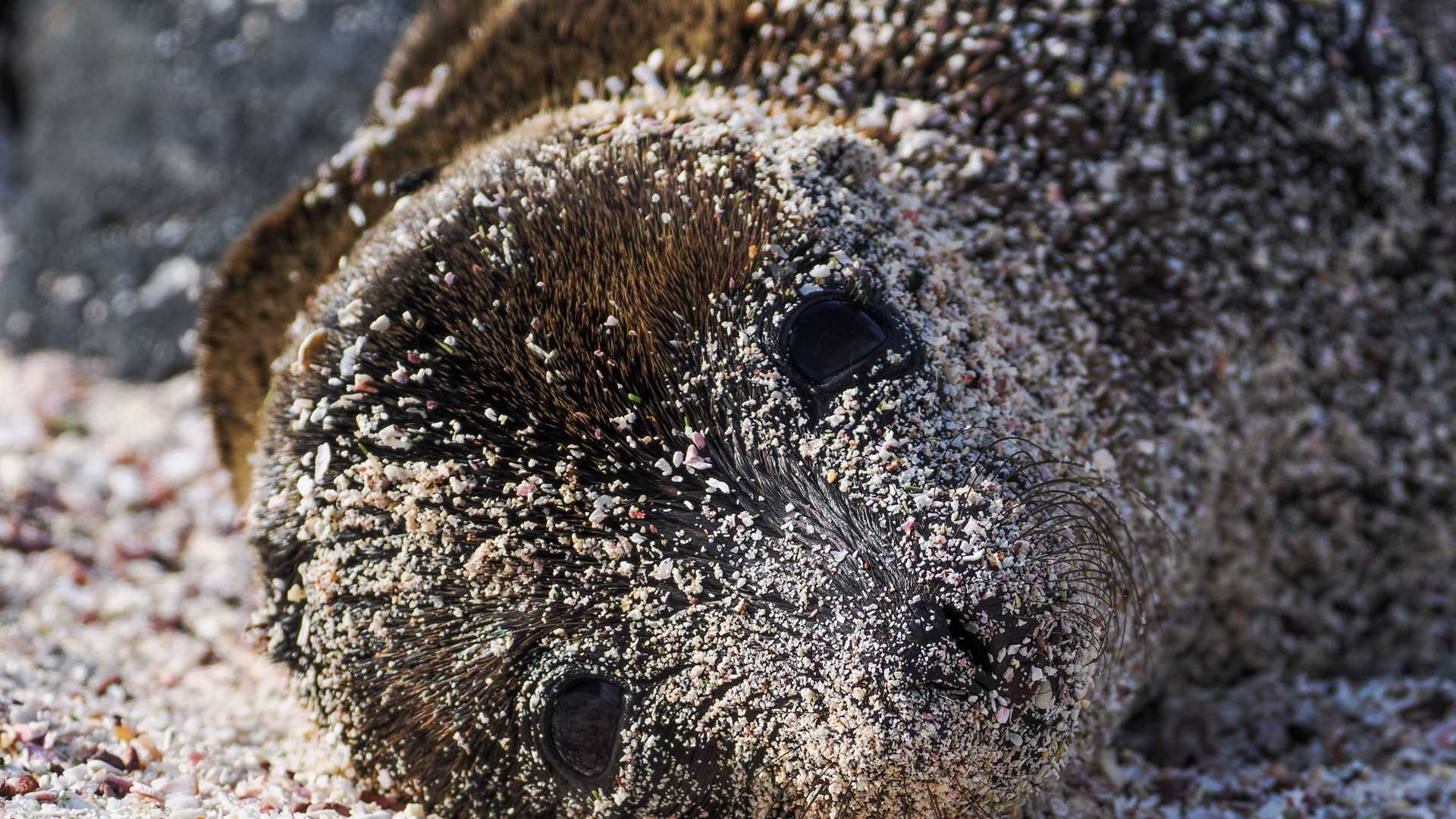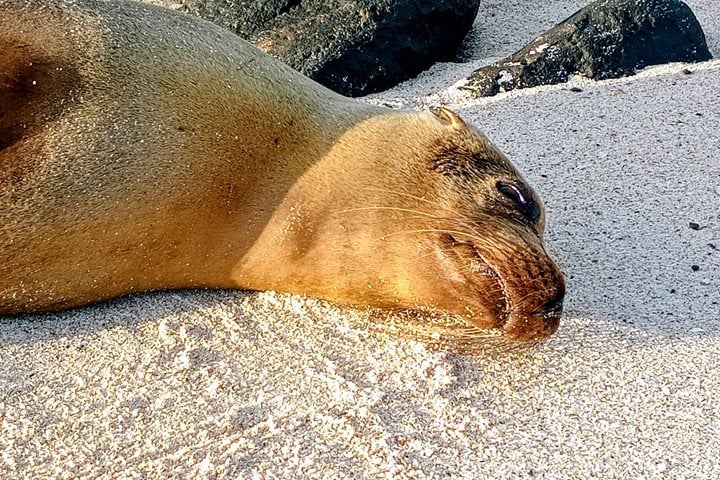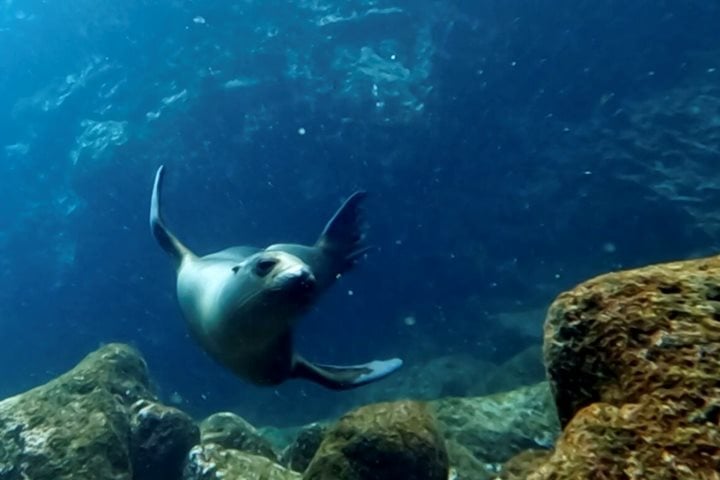Today we visited the beautiful island of Espanola. This old island has special marine currents that, combined with its erosion and age, make it special within the archipelago. Land animals, such as the Espanola mockingbird, are struggling at the moment because of the dry season. We started by landing at Gardner Bay, a beautiful white sand beach where sea lions are found. Our groups went deep water snorkeling in Gardner Islet, and kayakers explored the rocky shoreline.
In the afternoon, we walked along this eroded ground to admire the marine life that lives here, including marine iguanas, sea lions, and hundreds of marine birds. One of the highlights of our hike was the waved albatross. These birds are easy to spot, as their babies are continuing to grow before they leave the island at the end of the year. Nazca boobies and blue-footed boobies were on full display because the ocean productivity is high. They were nesting and mating all along the trail.







